
How to Use ttgo lora32: Examples, Pinouts, and Specs
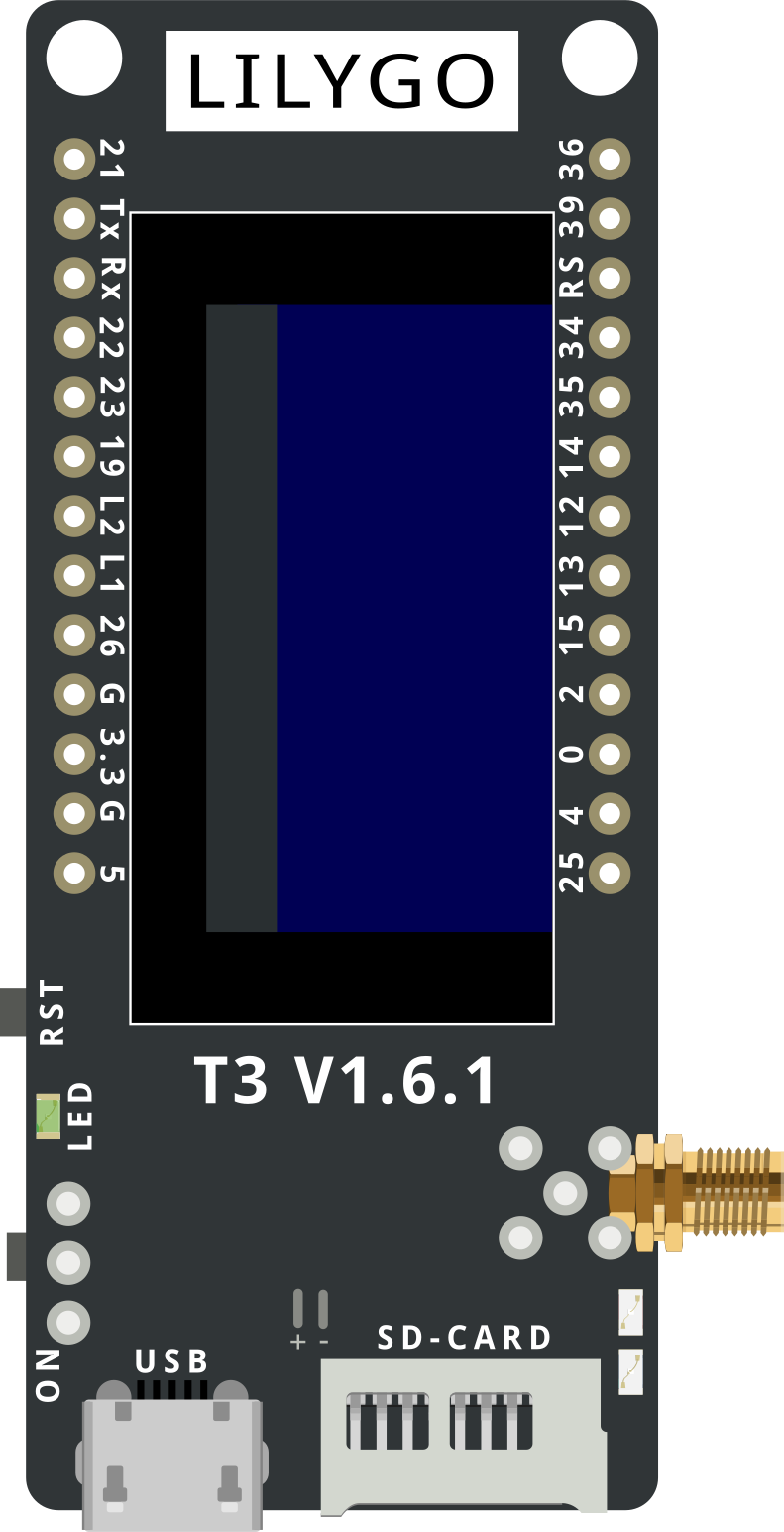
 Design with ttgo lora32 in Cirkit Designer
Design with ttgo lora32 in Cirkit DesignerIntroduction
The TTGO LoRa32 is a versatile development board that integrates an ESP32 microcontroller with a LoRa transceiver. This combination allows for long-range wireless communication, making it an ideal choice for Internet of Things (IoT) projects. The board is known for its low power consumption and extensive connectivity options, which include Wi-Fi, Bluetooth, and LoRa. Common applications include remote sensing, environmental monitoring, and smart agriculture.
Explore Projects Built with ttgo lora32
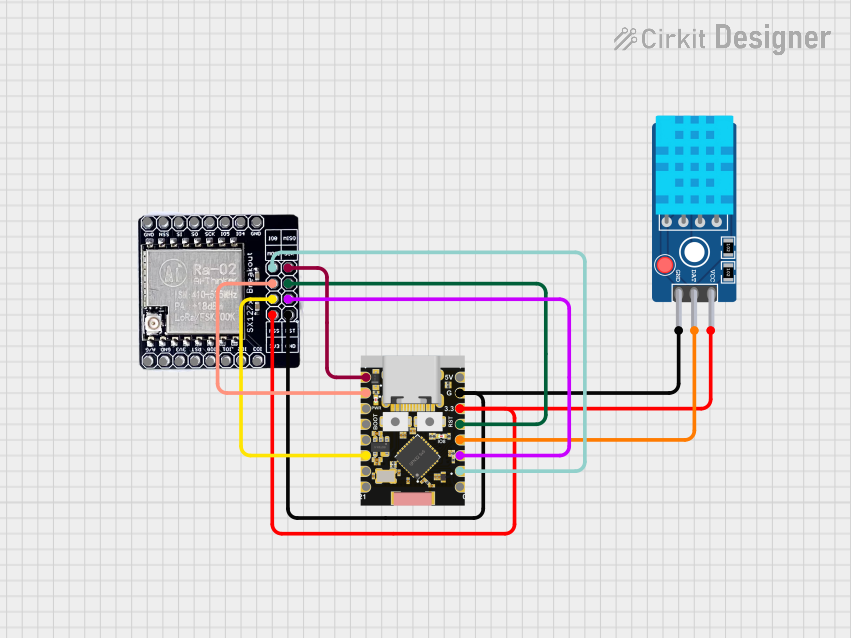
 Open Project in Cirkit Designer
Open Project in Cirkit Designer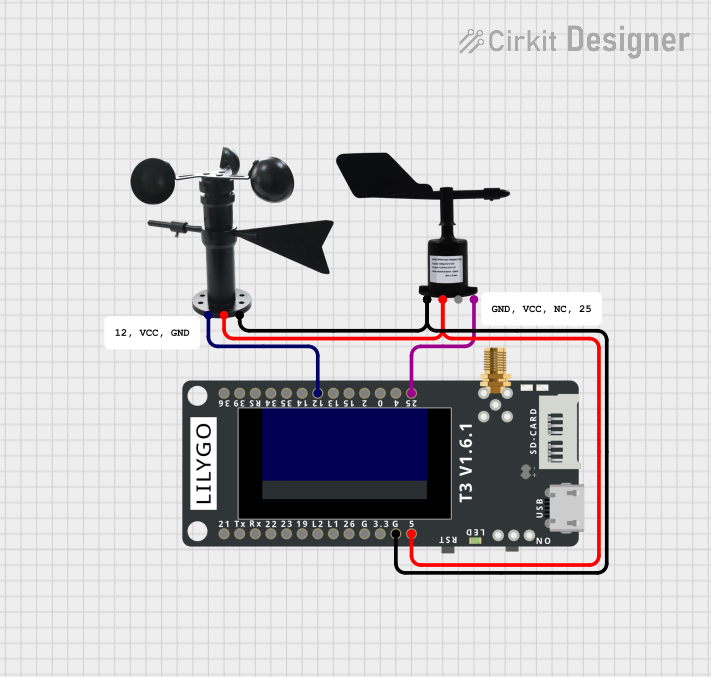
 Open Project in Cirkit Designer
Open Project in Cirkit Designer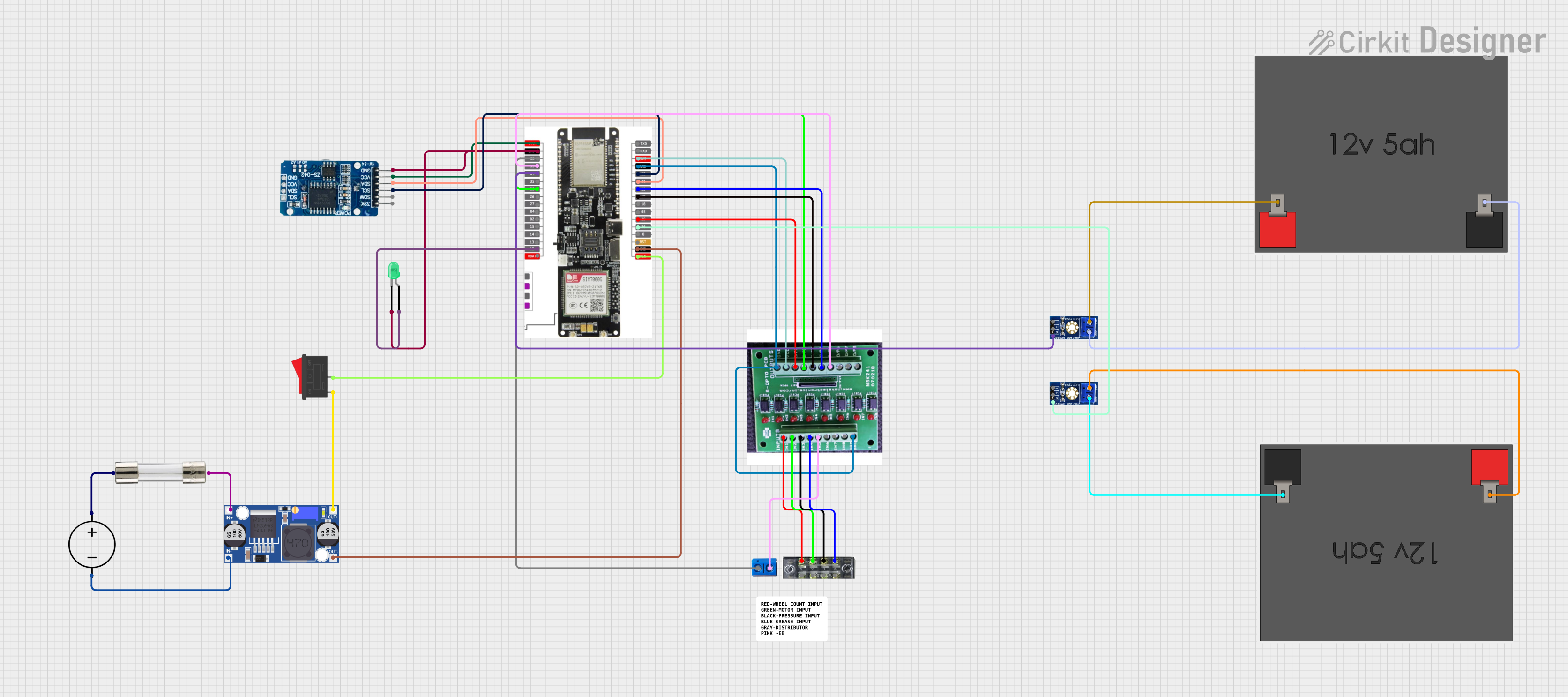
 Open Project in Cirkit Designer
Open Project in Cirkit Designer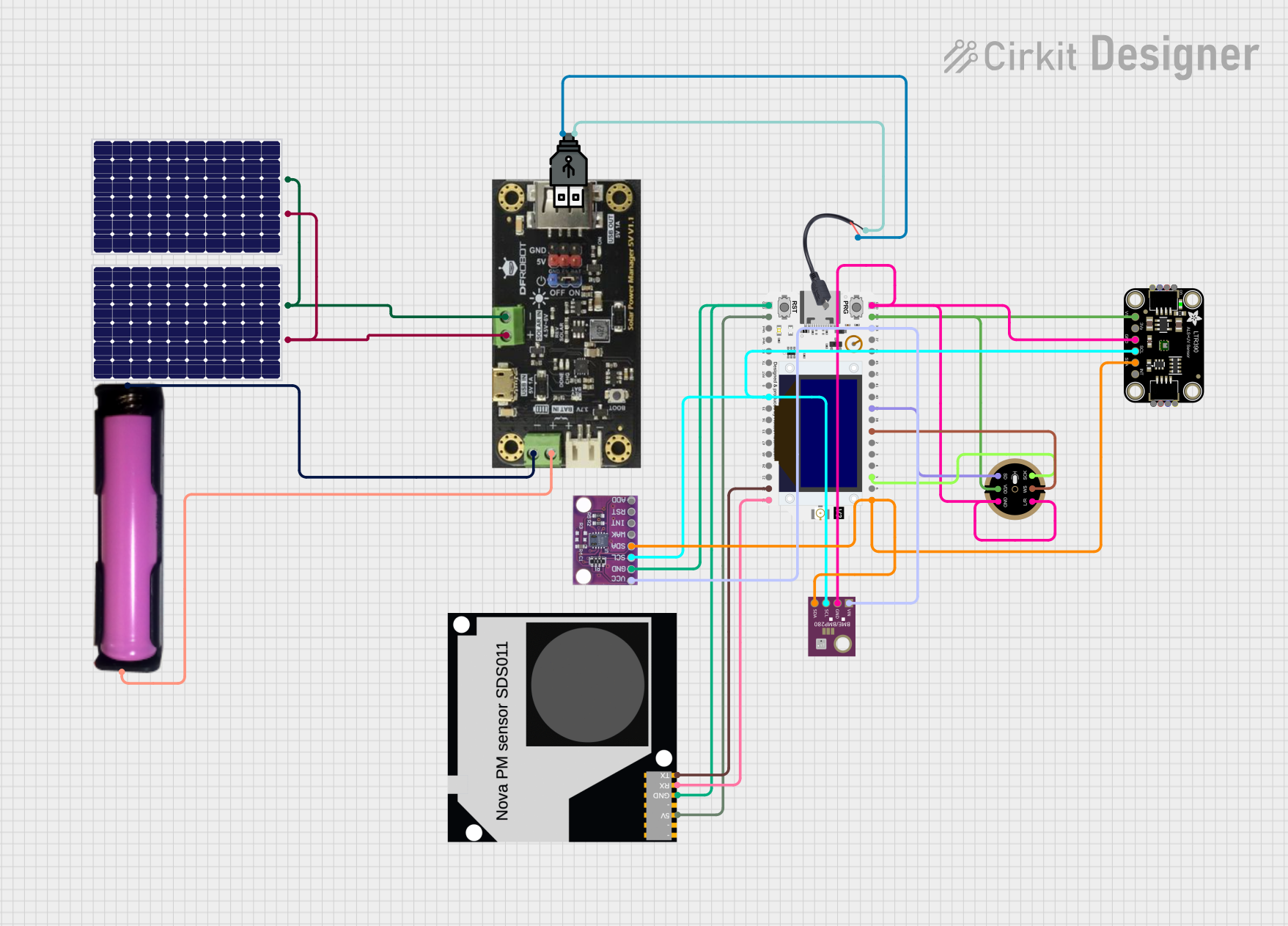
 Open Project in Cirkit Designer
Open Project in Cirkit DesignerExplore Projects Built with ttgo lora32

 Open Project in Cirkit Designer
Open Project in Cirkit Designer
 Open Project in Cirkit Designer
Open Project in Cirkit Designer
 Open Project in Cirkit Designer
Open Project in Cirkit Designer
 Open Project in Cirkit Designer
Open Project in Cirkit DesignerTechnical Specifications
Key Technical Details
| Parameter | Specification |
|---|---|
| Microcontroller | ESP32 |
| LoRa Transceiver | SX1276 |
| Operating Voltage | 3.3V |
| Input Voltage | 5V (via USB) |
| Flash Memory | 4MB |
| SRAM | 520KB |
| Wi-Fi | 802.11 b/g/n |
| Bluetooth | v4.2 BR/EDR and BLE |
| Frequency Range | 868/915 MHz (LoRa) |
| Communication Range | Up to 10 km (line of sight) |
| Power Consumption | Low power modes available |
Pin Configuration and Descriptions
| Pin Number | Pin Name | Description |
|---|---|---|
| 1 | GND | Ground |
| 2 | 3V3 | 3.3V Power Output |
| 3 | EN | Enable Pin |
| 4 | 23 | GPIO23 |
| 5 | 22 | GPIO22 |
| 6 | 21 | GPIO21 |
| 7 | 19 | GPIO19 |
| 8 | 18 | GPIO18 |
| 9 | 17 | GPIO17 |
| 10 | 16 | GPIO16 |
| 11 | 15 | GPIO15 |
| 12 | 14 | GPIO14 |
| 13 | 13 | GPIO13 |
| 14 | 12 | GPIO12 |
| 15 | 11 | GPIO11 |
| 16 | 10 | GPIO10 |
| 17 | 9 | GPIO9 |
| 18 | 8 | GPIO8 |
| 19 | 7 | GPIO7 |
| 20 | 6 | GPIO6 |
| 21 | 5 | GPIO5 |
| 22 | 4 | GPIO4 |
| 23 | 3 | GPIO3 |
| 24 | 2 | GPIO2 |
| 25 | 1 | GPIO1 |
| 26 | 0 | GPIO0 |
Usage Instructions
How to Use the Component in a Circuit
Powering the Board:
- Connect the TTGO LoRa32 to your computer using a USB cable. This will provide the necessary 5V input voltage.
- Alternatively, you can power the board using a 3.7V LiPo battery connected to the battery connector.
Programming the Board:
- Install the Arduino IDE and add the ESP32 board support by following the instructions on the ESP32 Arduino GitHub page.
- Select "TTGO LoRa32" from the board manager.
- Write your code and upload it to the board.
Connecting Sensors and Actuators:
- Use the GPIO pins to connect various sensors and actuators. Refer to the pin configuration table for pin assignments.
Important Considerations and Best Practices
- Antenna Connection: Ensure that the LoRa antenna is properly connected to the board to achieve optimal communication range.
- Power Management: Utilize the low power modes of the ESP32 to extend battery life in IoT applications.
- Pin Usage: Be mindful of the pin assignments, especially when using peripherals like I2C, SPI, or UART.
Example Code for Arduino UNO
#include <SPI.h>
#include <LoRa.h>
#define SS 18
#define RST 14
#define DI0 26
void setup() {
Serial.begin(9600);
while (!Serial);
// Setup LoRa transceiver module
LoRa.setPins(SS, RST, DI0);
if (!LoRa.begin(915E6)) {
Serial.println("Starting LoRa failed!");
while (1);
}
Serial.println("LoRa Initializing OK!");
}
void loop() {
Serial.print("Sending packet: ");
Serial.println("Hello World!");
// Send packet
LoRa.beginPacket();
LoRa.print("Hello World!");
LoRa.endPacket();
delay(10000); // Wait for 10 seconds before sending next packet
}
Troubleshooting and FAQs
Common Issues Users Might Face
LoRa Initialization Failed:
- Solution: Ensure that the LoRa antenna is connected and that the correct pins are defined in the code.
Board Not Recognized by Computer:
- Solution: Check the USB cable and port. Ensure that the correct drivers are installed.
Upload Errors:
- Solution: Verify that the correct board and port are selected in the Arduino IDE.
Solutions and Tips for Troubleshooting
- Check Connections: Ensure all connections are secure and correct.
- Update Firmware: Make sure the ESP32 firmware is up to date.
- Consult Documentation: Refer to the official TTGO LoRa32 documentation for more detailed information.
By following this documentation, users should be able to effectively utilize the TTGO LoRa32 development board in their IoT projects, leveraging its powerful features for long-range wireless communication.